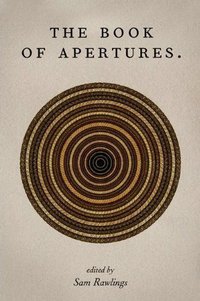You have no items in your cart. Want to get some nice things?
Go shopping For the last two years, the Lazy Gramophone collective have been collaborating on this combination of writing and artwork that shares Litro’s ethos: the championing of short fiction, poetry, and images – bite-sized works full of flavour. This is The Book of Apertures, compiled under the theme of the unexplainable. As the blurb on the back cover puts it, “As children particularly, we have all used our imaginations to conjure up explanations for the things that we didn’t quite understand, and so, in creating this book, the writers and artists were asked little more than to develop this idea.”
For the last two years, the Lazy Gramophone collective have been collaborating on this combination of writing and artwork that shares Litro’s ethos: the championing of short fiction, poetry, and images – bite-sized works full of flavour. This is The Book of Apertures, compiled under the theme of the unexplainable. As the blurb on the back cover puts it, “As children particularly, we have all used our imaginations to conjure up explanations for the things that we didn’t quite understand, and so, in creating this book, the writers and artists were asked little more than to develop this idea.”
Indeed, many of the stories in this book can be best described as resembling children’s drawings. That isn’t to say that they lack sophistication, but that they feel unfettered and are full of bright lines and novel shapes. There’s a dreamlike feel to everything in here. For example, Terra Quod Mare by Stacie Withers is the tale of a girl transforming slowly into an island, while Sam Rawlings’ Upon The Burrator Valley Floor is a treatise on the customs and behaviour of a race of intelligent creatures no bigger than ants. The rest of the works are as diverse a collection as you would expect from the let-loose imaginations of fourteen different human beings. Sure, the range of styles and subjects will mean that not everything is to everybody’s taste, but keep an open mind and most readers should find something to intrigue them in The Book of Apertures.
The stand-out stories for me were Abby Stokes Is Going To Die by Charlie Cottrell and State Jam by P X Amphlett. Cottrell’s story is a neat exchange of dialogue between the titular Abby and an unconventional grim reaper come to collect her soul. The reason for this exchange is thanks to a brilliantly funny moment on the second page, but I’d spoil the joke for you if I told you what it was. Suffice to say that the story is a touching look at ordinary human feelings, and is funny without satirising its characters.
State Jam seemed to me the most sophisticated piece in the collection, both in terms of concept and quality of writing. It has a shade of the science fiction of Philip K Dick or J G Ballard about it, gritty, hard-boiled and brimming with ideas. Its premise is that the music industry has discovered a means to make music heard inside people’s heads: “Your favourite tunes, direct into your auditory centres: ‘Loud as you want, and no hearing damage!’ went the ads.” Unfortunately, the government has got involved with this new technology, censoring certain kinds of music that it deems unhealthy to be played on-loop direct to the brain. The story that ensues from the premise manages to be at once lightning-paced and lucid as it outlines the details of the conceit. Amid all this, Amphlett finds the time to pack in vivid description and some great sentences, and I’m looking forward to whatever he writes next.
The artwork in the book is just as diverse as the writing. Some of it is illustrative, other parts just thematically similar. It’s hard to convey what art is like with words, so I’d urge you to simply pick up a copy of the book when it comes out and take a look. Highlights are Dan Prescott’s illustrations for Matt Black’s The Magpie King (picture a gnarled, leafless tree above which flies a sphere of silhouetted birds, so that together their shapes make up the missing foliage of the tree) and Tom Harris’ picture at the end of Joanne Tedds’ The Apple Tree (another tree picture, splendidly composed – on the right hand side of the page, at the foot of a bare tree trunk, a man squats with his head in his hands. As the trunk rises it bends to the left and droops its branches to form an arch above and to either side of the man. From the lowest of these branches – the ones that scrape the floor to the man’s left – an apple grows, as if the tree itself is offering it up to him).
I could go on, but hopefully you by now have a sense of the range of material packed into this volume. In a time when publishers are taking fewer and fewer risks on unknown writers, Lazy Gramophone are to be applauded for giving their collective a chance to shine. I’d recommend grabbing a copy when it comes out on April 5th.

About Ali Shaw
Ali Shaw is the author of the novels The Man who Rained and The Girl with Glass Feet, which won the Desmond Elliot Prize and was shortlisted for the Costa First Book Award. He is currently at work on his third novel.




